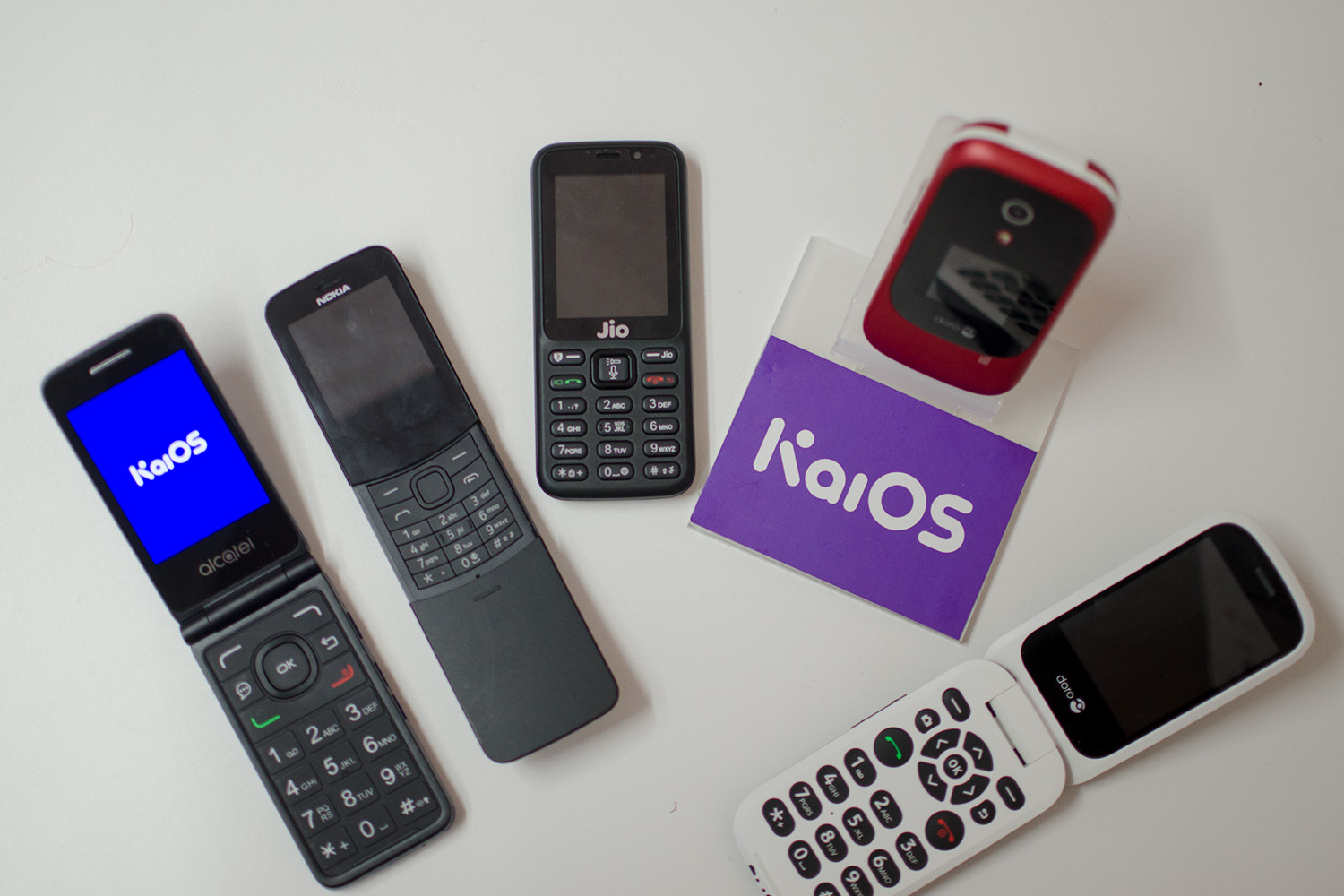
Android Go may be Google’s answer for more affordable smartphones, but with 1.3 billion feature-phone owners in the world, according to Counterpoint Research, that still leaves a lot of people using yesterday’s technology. Maybe not for long. A relatively-new software company called KaiOS Technologies is bringing an enriched “dumb” phone experience to a market most manufacturers have neglected for the past decade.
The company is bringing modern smartphone apps and experiences to affordable devices.
You may have never heard of KaiOS, but there’s a chance you’ve seen its software in action if you have read anything about HMD Global’s newly-announced Nokia 8110 4G — it runs KaiOS. The software is lightweight, based on HTML5, and manufacturers that use it on their non-touch phones are able to customize the look to their liking. In HMD’s case, it’s designed to be reminiscent of Nokia’s old Symbian operating system.
KaiOS Technologies now has its software on phones from Doro, Reliance Jio, HMD, Alcatel, and soon, Bullitt (with a Cat phone) and Micromax. What’s even more impressive is how the company is bringing modern smartphone apps and experiences to these affordable devices, thanks to entry-level processors in feature phones from chipmakers like Qualcomm.
A partnership with Google, Facebook, and Twitter also means people who use feature phones running KaiOS will soon have access to an app store, as well as web apps including Google Maps, Google Assistant, Facebook, Twitter, and more. JioPhone 4G phone owners, for example, already have access to JioTV’s video-streaming service — meaning they can watch shows and movies on their feature phones.
Just the essentials
We tested Google Maps on the Nokia 8110 4G, and while we had to take a few minutes to get used to a non-touch screen phone, we were able to look around on the map and find nearby places — just like on a smartphone. Google Assistant lets you tap a button to ask it a question, such as a query about the weather, but we weren’t able to do further testing due to congested cell phone coverage at Mobile World Congress.
All of this is possible because new feature phones are launching with support for 4G networks, largely because carriers are dropping 2G and 3G to make way for 4G LTE expansion as well as 5G. As mobile operators look for ways to replace revenue earned from voice and text, they are increasingly looking at a data and services business model. 4G feature phones are becoming essential in countries where data is expensive, and where there’s a wide gap in digital literacy. Since KaiOS doesn’t need to use much data, it’s likely a cheaper option than going for an Android Go smartphone; it also doesn’t require as much of a learning curve for someone who has never used a smartphone before.
But the software doesn’t just work well for emerging markets — it also works for people with smartphones. The Nokia 8110 4G, for example, can act as a 4G hotspot for your smartphone, or as a backup phone thanks to its 17-day battery life. Access to email, calendar, contacts, as well as apps like Facebook and Google Maps, give you all the essentials you might want on a phone to use, say, on your next hiking trip. KaiOS is present in the U.S., and its software is available on feature phones sold on Sprint, AT&T, and T-Mobile.
Bridging the digital divide
KaiOS Technologies originally started as a project at TCL Corporation, but founder and Chief Executive Officer Sebastien Codeville told Digital Trends he pitched the idea of separating it as a new company so KaiOS could work with different manufacturers. TCL agreed, and it spun off in 2016. Codeville said his company now has almost 200 employees, with offices set up around the world. With 20 million active users as of February 2018, Codeville said he’s targeting between 120 to 150 million active KaiOS users by the end of the year.
Codeville said he’s targeting between 120 to 150 million active KaiOS users by the end of the year.
What’s unique about the company is how hyperlocal it is — especially since it has employees across the world. The idea is to encourage local developers to develop apps for the operating system, offering localized content on these localized smartphones. To give a sense of how localized these feature phones are, the JioPhone running KaiOS already supports 22 Indian languages and dialects, making the phone accessible for a wide number of people.
Codeville said a Kai Store will be available soon with free apps at first, but developers can add paid apps at a later date. It’s also working on an advertising platform, as another revenue model for the company and developers. Other features on the roadmap this year include adding support for near-field communication, so feature phones with NFC can make contactless payments. Video calling is also in the works, as well as support for dual-SIM and enterprise.
KaiOS Technologies isn’t just focusing on the phone market. Codeville said the company has plans to expand its software into the wearables space, creating entry-level wearables for children and elders; as well as the smart home and automotive industries.
With 600 million feature phones to be sold every year for the next 5 years, according to estimates from the International Data Corporation and KaiOS Technologies, Codeville said his company is not a competitor to Android or iOS. The goal is to connect unconnected feature phones, improve digital literacy, and decrease the digital divide.



